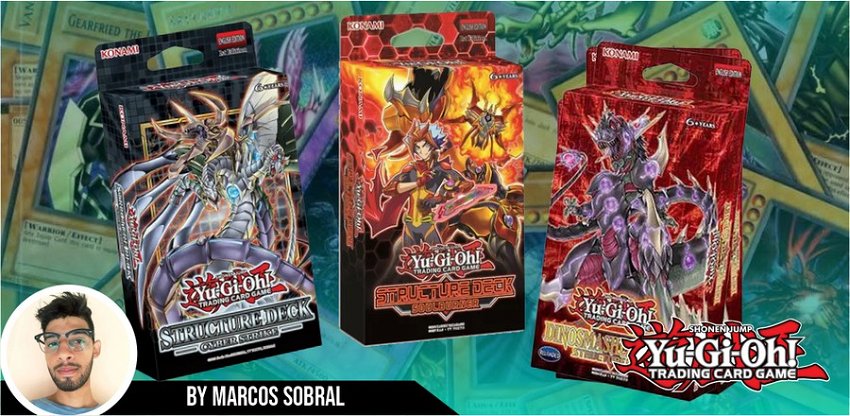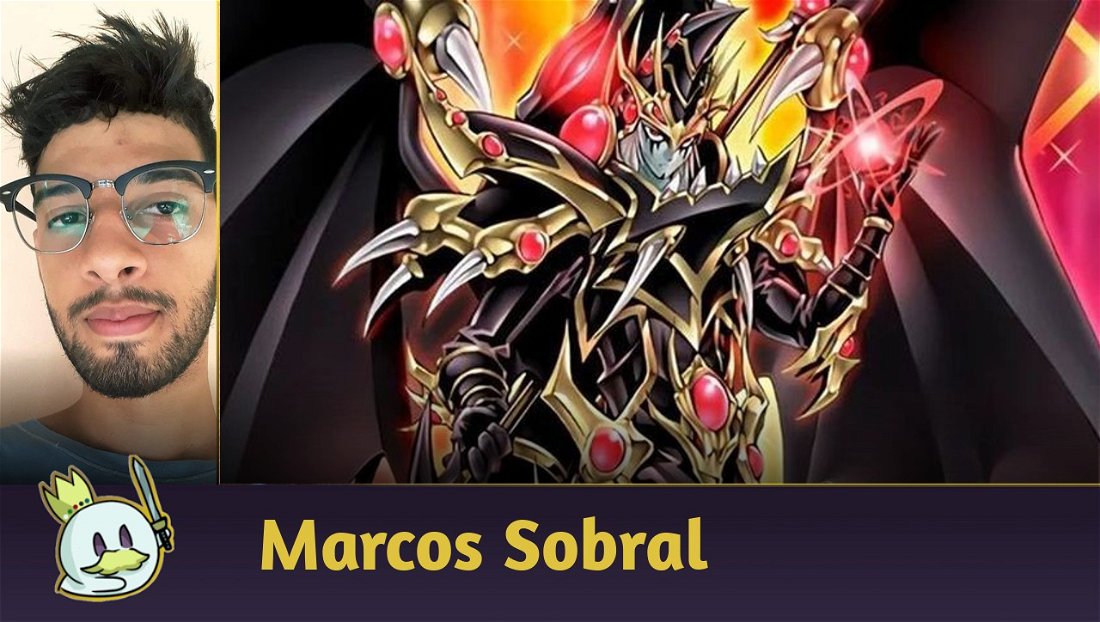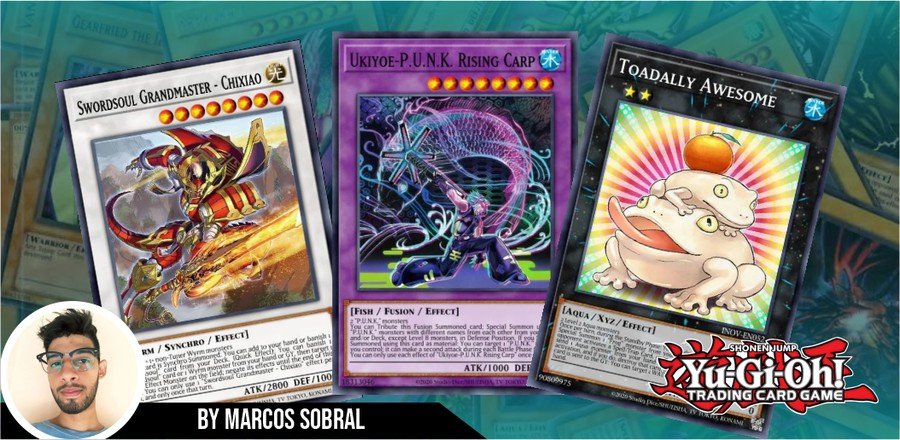Yu-Gi-Oh!: the first investment
If you intend to enter the Yu-Gi-Oh! TCG and still don't know where to start, the first thing you need to keep in mind is that yes, there will be some cash outlay. However, this value does not have to be as high as you might think.
Where to start my collection?
Ideally, you start by buying a good, cheap deck. It is true that the best decks are often expensive, but there are also competent decks that are affordable.
Some good and cheap deck options are: @ignister, Cyber Dragon, Dinosaur, Invoked and Salamangreat. Of course, these decks are not at the top tiers in the current format, but they are still good enough to have good results at the local level and especially to have fun with friends.
Buy sealed decks or single cards?
There are so-called Structure Decks, which are preconstructed decks based on a certain Yu-Gi-Oh! Type, Attribute, strategy or character. It is said that each deck is designed to play right out of the box, but you actually need to buy 3 copies of the same structure, since a deck needs multiple copies of the same card. Often you will also have to purchase some cards in addition to the structure decks to complete your deck.
The decision to build your deck from a structural deck should come after some points are taken into consideration. I will use as an example some decks already mentioned above, which received structural decks: Dinosaur, Cyber Dragon and Salamangreat.
The Structure Deck Dinosmasher's Fury was very relevant at the time of its release, but nowadays, I don't consider it such a good option anymore.
The reason? It doesn't have some of the most important cards in the deck, such as Animadorned Archosaur and Double Evolution Pill, so you would have to purchase them separately. Another point is that the deck does not have any monsters for the extra deck, increasing the number of cards you will need to purchase. Thus, I consider it much more advantageous to make the single purchase to get the most complete deck possible, whether in a store or even from another duelist.
On the other hand, Cyber Strike and Soulburner
are much better options. Although it is necessary to buy other cards to complete these decks, both have the presence of relevant staples. The Cyber Strike Structure Deck features Infinite Impermanence, while the Soulburner Structure Deck features Ash Blossom & Joyous Spring. The presence of these cards makes them a much better investment.
So, returning to the initial question, I consider that buying your cards individually is the most appropriate, however, if there is a structure of the deck you intend to build, and it has good staple reprints, you will be getting a good deal by purchasing it.
What's the next step?
After purchasing your deck, the next step is to invest in staples. Staples are generic cards with useful effects, so they can be used in almost any deck the owner builds.
For many, this is the most important step, as most staples are not at risk of being banned. While decks can lose relevance, either because of the banlist or due to other more powerful decks emerging.
In addition, acquiring staples will make the construction of new decks cheaper, since you will already have some cards that can be used in them.
Which staples to buy?
At the beginning, it is interesting that you acquire staples relevant to the place where you play. That is, that are good against the decks you will face. Also, your first staples should be compatible with your deck. Another important factor is the price, it is more advantageous for a beginner to invest in cheaper cards.
Here are some staples you can add to your collection!
Yu-Gi-Oh! TCG Staples Guide
Hand Traps
Hand trap is an unofficial term to describe cards that are activated from the hand in response to an opponent's actions. These are usually monster cards, but there are exceptions. They are very relevant in the game due to their versatility and, mainly, because they allow you to interact with your opponent's moves during their turn.
Some hand traps may be steeper in some regions, so give priority to those that are cheaper. However, it is recommended to purchase the most generic and in this regard, Ash Blossom & Joyous Spring stands out from the rest.

Below, you can see some of the most popular hand traps currently:

To deal with your opponent's hand traps, you can use Called By The Grave, which is effective against most of them.

Card Draw Spells
Card draws help keep your deck consistent, but you need to know which one is best suited to your strategy, as many have costs that can be very “expensive” for some decks.

Spell and Trap Removal
Cards that deal with spells and traps can be very relevant against control decks, or even against other types of decks, since floodgates are on the rise in the format, and therefore, being used in the most varied decks.

Cards to go after later
Many decks have difficulty making their moves when the opponent starts first, to try to solve this problem there are cards that help you deal with the opponent's already established field.
Kaiju are excellent at dealing with tough monsters. Gameciel, the Sea Turtle Kaiju is the one with the lowest attack, hence the one you can defeat most easily.

However, Gadarla, the Mystery Dust Kaiju is the most recommended kaiju for the format, due to the existence of the Floowandereeze deck, which uses the Barrier Statue of the Stormwinds, a card that only allows special summons of monsters from the wind attribute.

There are also decks like Dinosaur and Cyber Dragon where you can use dinosaur and machine-type kaiju, respectively, as they can be searched for by cards used in those decks.

There are other cards with an effect similar to that of the kaiju, however, they have some restrictions that make them not have space in any deck type.

Monster Destruction Cards can help you clear your opponent's field. There are several options, and it's up to you to choose one that benefits your deck's mechanics.

There are also cards that can steal your opponent's monsters to your side of the field.

Cards like Book of Moon and Forbidden Chalice can also be very useful, and because they are fast spells, they are also good options even when you start the duel.

Finally, we come to the cards that, among the economic options, I consider the best to break the opponent's field.
Dark Ruler No More cannot be responded to by monster effects, while Super Polymerization cannot be responded to by any cards or effects.

Floodgates
Floodgate is an unofficial term used for a card with a continuous effect that restricts one or both players from taking any action. The most common floodgates are continuous trap cards. However, they can also be spell cards and even monsters.
Mystic Mine has been a problem for many players as it is being used in many decks.

Other relevant floodgates are:

Traps
Trap cards are used less often in current decks, as their mechanics make them slow, so if you're not running a trap-focused deck, it's recommended that you leave them in your side deck, just to add to the main deck when you are certain, the duel will begin.

Once you've purchased a deck and staples, it's time to define a decklist to use in your duels. Don't get so attached to the first version you build, it's interesting that you do tests to make sure the deck is running well.
In case you If you don't have so much spare time to go out and find people to duel, use Dueling Nexus or Duelingbook
to train and gain experience. Another interesting way to improve your skill is to watch videos of other people using the same deck as you.
Conclusion
For more tips and information about the Yu-Gi-Oh! TCG keep following our articles, Cards Realm thanks you! A big hug to all duelists!














— Comments 0
, Reactions 1
Be the first to comment